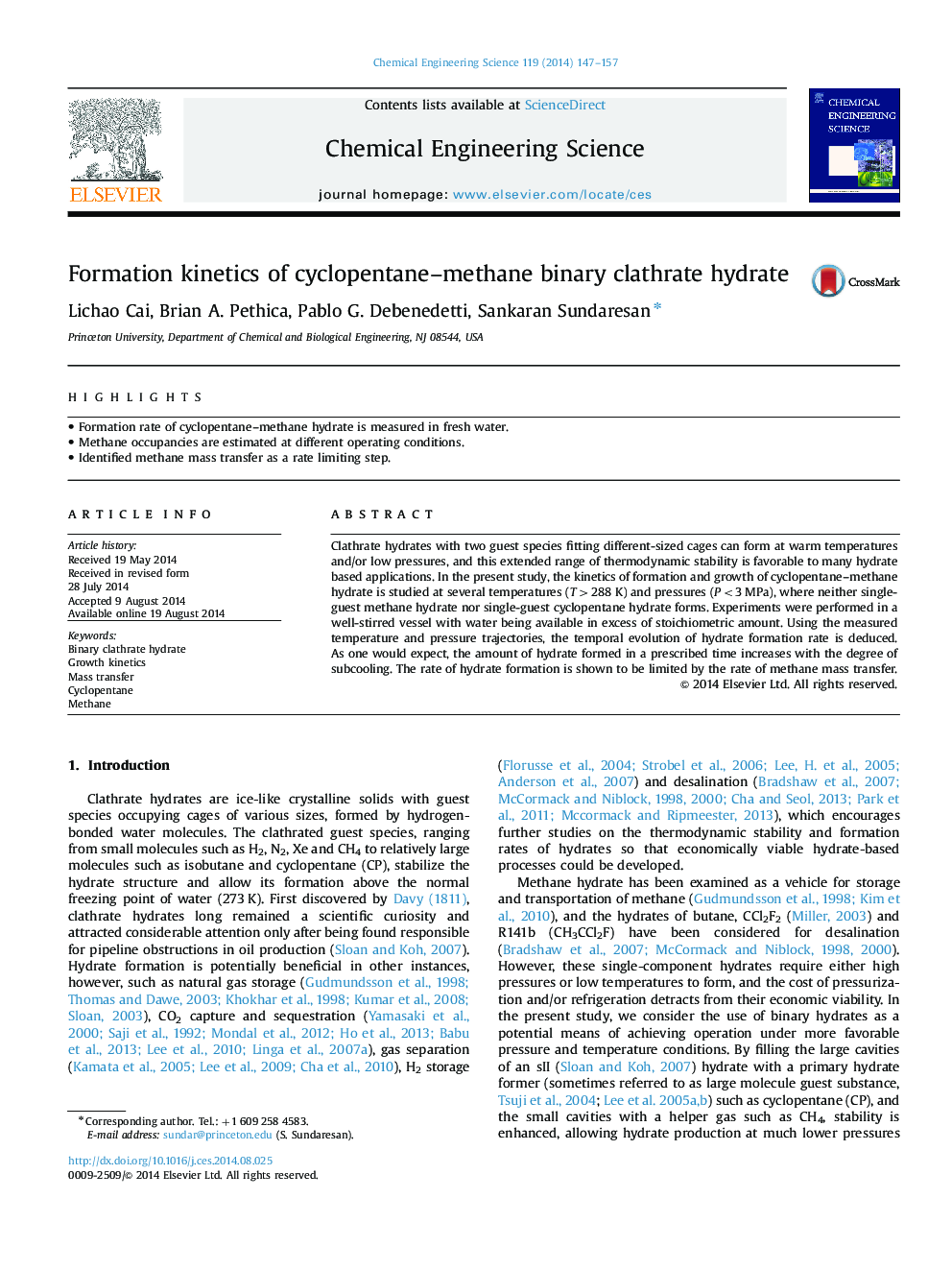| Article ID | Journal | Published Year | Pages | File Type |
|---|---|---|---|---|
| 154853 | Chemical Engineering Science | 2014 | 11 Pages |
•Formation rate of cyclopentane–methane hydrate is measured in fresh water.•Methane occupancies are estimated at different operating conditions.•Identified methane mass transfer as a rate limiting step.
Clathrate hydrates with two guest species fitting different-sized cages can form at warm temperatures and/or low pressures, and this extended range of thermodynamic stability is favorable to many hydrate based applications. In the present study, the kinetics of formation and growth of cyclopentane–methane hydrate is studied at several temperatures (T>288T>288 K) and pressures (P<3P<3 MPa), where neither single-guest methane hydrate nor single-guest cyclopentane hydrate forms. Experiments were performed in a well-stirred vessel with water being available in excess of stoichiometric amount. Using the measured temperature and pressure trajectories, the temporal evolution of hydrate formation rate is deduced. As one would expect, the amount of hydrate formed in a prescribed time increases with the degree of subcooling. The rate of hydrate formation is shown to be limited by the rate of methane mass transfer.
